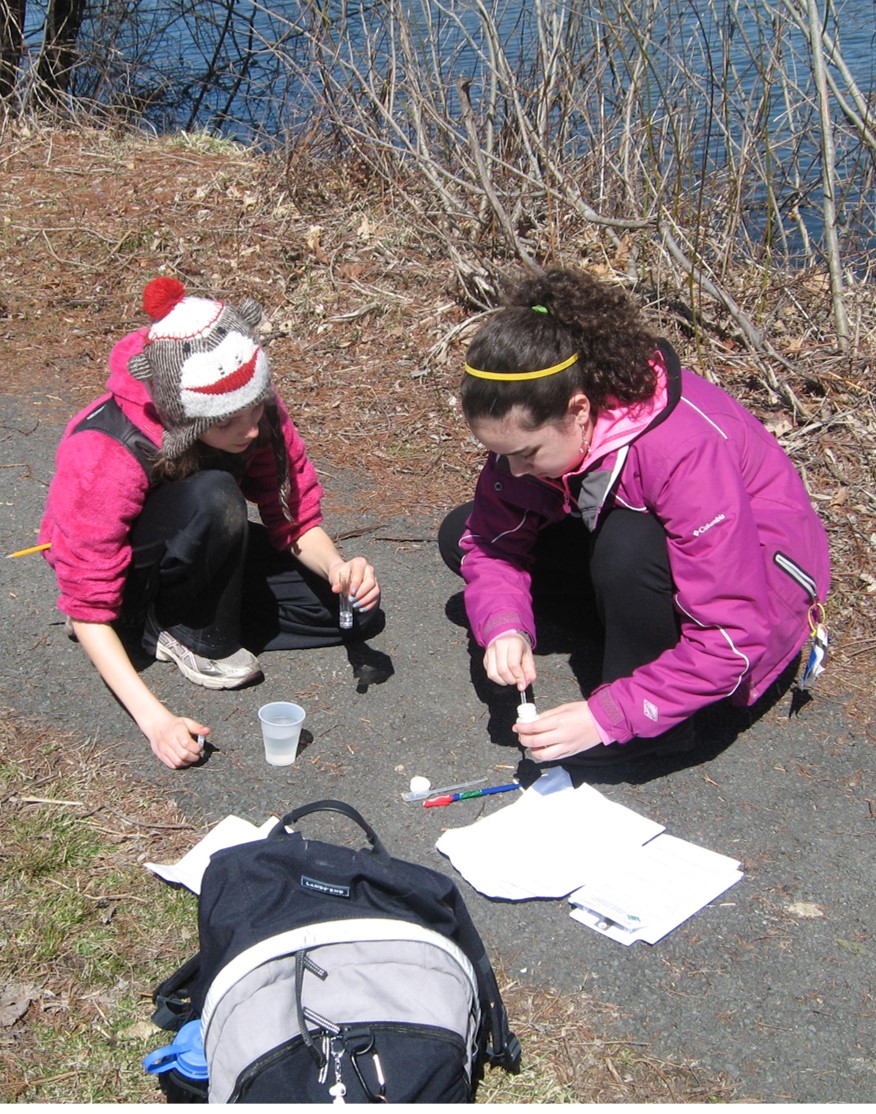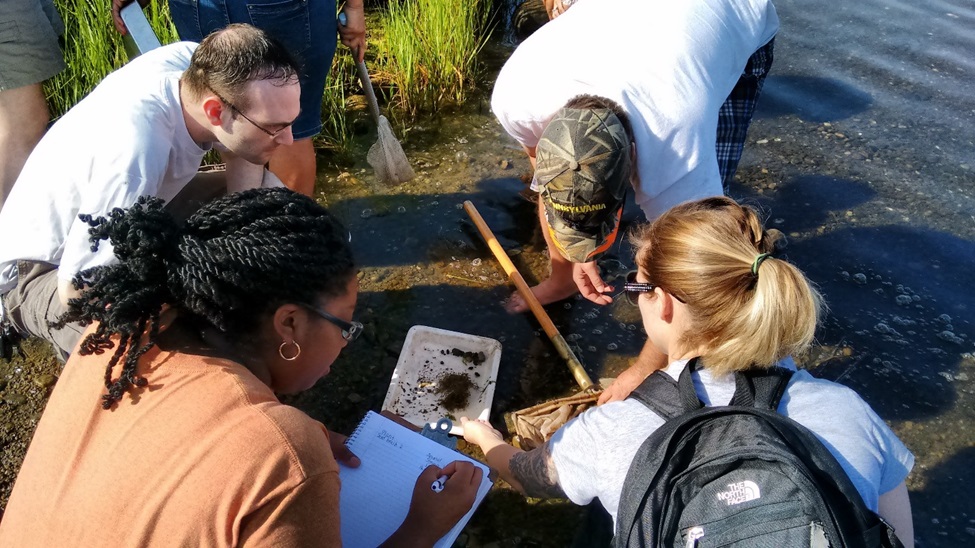Programs and Field Studies
Through hands-on, engaging investigations, students develop critical thinking skills to explore environmental and historical questions and issues.
These educational programs are designed to meet NGSS standards and implement Common Core materials in science, math, and language arts for grades 3-12.

Educational programs can be scheduled at the Kellogg Environmental Center and Osborne Homestead Museum in Derby. All programs are available for school, youth groups, and organizations and can be presented either on or off-site.
- The programs are 2 ½ hours in length for a fee of $125.00 per classroom. A classroom is defined as a group of 25 students.
- If there is a topic or area educators wish to cover, not provided in the program menu below, we will work with you to create a program to suit your specific needs. Please e-mail or call to discuss options.
- Many programs can be adapted to take place in a schoolyard, community park or classroom setting. If bringing a program off site, programs will be altered to fit into a one hour time frame with a fee of $70 per contact hour.
Buses are required to stay on site for the duration of the program.

These interdisciplinary school programs utilize the resources of the Kellogg Environmental Center, the Osborne Homestead Museum and Osbornedale State Park to create environmentally literate citizens through use of our environment. Programs use technology as well as outdoor simulations and explorations to meet the Next Generation Science Standards (NGSS).
Grades 3 through 5
Resources: Then, Now and Tomorrow
Students look back in history to compare resource use when Mrs. Frances Osborne Kellogg (1876-1956) lived to current day activities. Students will investigate the museum for changes in technology, evaluate and categorize natural resources through trash investigations and calculate their environmental footprint to understand how our use of resources has changed. Students will identify ways to improve conservation efforts through green technology and personal action. (NGSS: 4-ESS3-1, 3-5-ETS1-1)
Water on the Move
Understanding the role of water in Earth's processes begins with understanding its limits and availability. Students will explore the movement of water in the built and natural environment through hands on simulations and activities that focus on the watercycle, groundwater, watershed mechanics and distribution of water on the globe. Knowing how water behaves is the first step to water conservation and protection. (NGSS: 3-5-ETS1-2, 4-ESS2-2, 3-5-ESS2-2, 5-ESS3-1)
Measuring the Environment
Students participate in citizen science investigations to learn about the methods of science and evaluation used to quantify environmental issues. Activities are provided that are seasonally appropriate and allow for real hands on participation in data collection. Simulations are dependent on age, group size and season, but can include: lichen monitoring, bee behavior, population counts, and carrying capacities. (NGSS: 3-LS3-1, 3-LS3-2, 3-LS4-2, 4-LS1-1 5-LS2-1)
Food for Thought
Explore the history and technology of food and natural resources. Students use historical and scientific information to compare and contrast changes in our food system. Students will look at consumption, availability, and technology in food production from the 1800's to present day. (NGSS: MS-LS2-1, 5-ESS3-1, 3-5-ETS1-2, 5-PS3-1)
Grades 6 through 12
What Color is the Air?
Monitoring of environmental quality is important to help apply methods that reduce human impacts. Students will receive information on what scientists look at to understand air quality. They will use biological indicators and simple particle sensors to see how to monitor air changes. (NGSS: 5-ESS3-1, MS-ESS3-3, MS-LS2-1)
Testing the Waters
We are all drawn to water, but sometimes we harm what we love. Students will make simulated systems and conduct qualitative water tests to evaluate the health of a water environment. Learning how to reduce impacts has resulted in many new materials and design applications. Students will learn about these and how to apply them to reduce impacts in our communities. (NGSS: MS-LS2-1, MS-ESS3-3, HS-ESS3-4)
Our Environmental Footprint by the Numbers
Students investigate the impact humans have on the planet by calculating their own "environmental footprint," thereby showing them the amount of land and water they need to support their lifestyle. Students compare their own environmental footprint to footprints from people around the world. We will focus on the area of carrying capacity, first through wildlife management and then as it applies to human condition. Students will be asked to identify ways to redesign an aspect of needs and wants to help improve resource use as related to lifestyles and consumption of materials. (NGSS: MS-ESS3-4, HS-ETS1-1)
Food for Thought
Explore the history and technology of food and natural resources. Students use historical and scientific information to compare and contrast changes in our food system. Students will look at consumption, availability, and technology in food production from the 1800's to present day. (NGSS: MS-LS2-1, 5-ESS3-1, 3-5-ETS1-2, 5-PS3-1)
Educational Resources
Women in the Environment
An educational packet developed for educators to help bring awareness of women’s role in developing environmental fields, sciences and policy locally and globally. Included are bios, and photos of highlighted women and activities to help students investigate more on their own. Women in the Environment
Native Waters ~ Exploring CT Waterways
Native Waters connects historical use of rivers and waterways to the historical tribes of Connecticut. Materials compliment Project WET activities and aim to connect people with water through culture, tradition and science. Native Waters ~ Exploring CT Waterways
Content Last Updated September 2017

